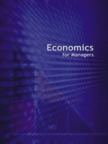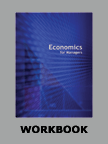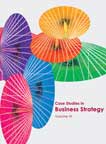Holcim's Acquisitions in 2005
|
|
ICMR HOME | Case Studies Collection
Case Details:
Case Code : BSTR168
Case Length : 12 Pages
Period : 1999-05
Organization : MG Rover
Pub Date : 2005
Teaching Note : Available
Countries : Global
Industry : Mobile Phone
To download Holcim's Acquisitions in 2005 case study (Case Code: BSTR168) click on the button below, and select the case from the list of available cases:

OR

Buy With PayPal
|
Price:
For delivery in electronic format: Rs. 500;
For delivery through courier (within India): Rs. 500 + Shipping & Handling Charges extra
» Business Strategy Case Studies
» Case Studies Collection
» Business Strategy Short Case Studies
» View Detailed Pricing Info
» How To Order This Case
» Business Case Studies
» Case Studies by Area
» Case Studies by Industry
» Case Studies by Company
Please note:
This case study was compiled from published sources, and is intended to be used as a basis for class discussion. It is not intended to illustrate either effective or ineffective handling of a management situation. Nor is it a primary information source.
Chat with us

Please leave your feedback

|
|




<< Previous
Holcim's strategy in recent years has also changed in the
areas of aggregates mining and the production of ready mix concrete. In the face
of globalization and increased competition, the importance of having your own
sources of aggregates and freshly produced concrete has dramatically increased.1
- Radovan Voda, Regional Manager, Aggregates and Ready Mix
Division, Holcim.
This strategic alliance (between ACC and Holcim) is a
landmark in the Indian cement industry as it will bring significant advantages
to the shareholders of both the partners and their commitments to the growth of
cement markets in India2.
- Paul Hugentobler, Whole-Time Director & Executive
Committee Member, Holcim.
What we've observed is that over time, when markets get
more and more mature, some other products, activities and segments are creating
value - namely aggregates, ready-mix, and maybe even asphalt, paving, concrete
blocks etc. In India, it's clearly emerging, so there is a focus on cement. In
the case of Aggregate Industries, which is active in the UK and the US, it's
clearly a mature market, so we follow the aggregate line.3
- Benoit-H. Koch, Executive Committee Member, Holcim.
Introduction
|
In 2005, the Glaris, Switzerland-based Holcim Group (Holcim), was one of the
world's leading suppliers of cement, aggregates4
and ready-mix concrete. It held majority and minority stakes in a number of
companies in more than 70 countries.
Holcim was also involved in consulting and trading services related to
engineering. In 2004, the company had sales of CHF 13,215 million5
and a net income of CHF 914 million6
(Refer Exhibit I). Holcim adopted the inorganic growth strategy and was on an
acquisition spree in the 1990s and 2000s. In 2005, Holcim acquired Aggregate
Industries (AI) based in Leicestershire, UK and Associated Cement Companies Ltd
(ACC) in India.
|

|
|
|
Holcim's acquisition strategy was based on the level
of maturity of the market where the acquired companies were located
(Refer Exhibit II).
AI, which was a supplier of aggregates, asphalt and ready-mix concrete,
added value to Holcim's operations through integration in mature markets
like the US and UK, while ACC was meant to bring in sustained revenues
to Holcim due to the potential of the cement industry in an emerging
economy like India, where demand for cement was increasing at a higher
pace than in Europe and the United States (Refer Exhibit III). |
Holcim's Acquisitions in 2005
- Next Page>>
|










